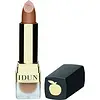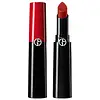What's inside
What's inside
 Key Ingredients
Key Ingredients

 Benefits
Benefits

 Concerns
Concerns

 Ingredients Side-by-side
Ingredients Side-by-side

Pentaerythrityl Tetraisostearate
EmollientPolybutene
Cera Microcristallina
Emulsion StabilisingSynthetic Wax
AbrasiveVp/Hexadecene Copolymer
Butyrospermum Parkii Butter Extract
Skin ConditioningOctyldodecanol
EmollientCaprylic/Capric Triglyceride
MaskingMica
Cosmetic ColorantSilica
AbrasiveTocopheryl Acetate
AntioxidantPolyglyceryl-2 Diisostearate
EmulsifyingPhenethyl Alcohol
MaskingCaprylyl Glycol
EmollientRubus Chamaemorus Seed Oil
Skin ConditioningCI 77891
Cosmetic ColorantCI 77491
Cosmetic ColorantCI 77492
Cosmetic ColorantCI 77499
Cosmetic ColorantCI 42090
Cosmetic ColorantPentaerythrityl Tetraisostearate, Polybutene, Cera Microcristallina, Synthetic Wax, Vp/Hexadecene Copolymer, Butyrospermum Parkii Butter Extract, Octyldodecanol, Caprylic/Capric Triglyceride, Mica, Silica, Tocopheryl Acetate, Polyglyceryl-2 Diisostearate, Phenethyl Alcohol, Caprylyl Glycol, Rubus Chamaemorus Seed Oil, CI 77891, CI 77491, CI 77492, CI 77499, CI 42090
Trimethylsiloxyphenyl Dimethicone
Isohexadecane
EmollientOctyldodecyl Neopentanoate
EmollientPolyethylene
AbrasiveHydrogenated Styrene/Methylstyrene/Indene Copolymer
Synthetic Fluorphlogopite
Vp/Hexadecene Copolymer
Hydrogenated Polyisobutene
EmollientAcrylic Acid/Isobutyl Acrylate/Isobornyl Acrylate Copolymer
CI 77891
Cosmetic ColorantParaffin
PerfumingCera Microcristallina
Emulsion StabilisingVp/Eicosene Copolymer
Mica
Cosmetic ColorantSynthetic Wax
AbrasiveCI 77491
Cosmetic ColorantCI 77492
Cosmetic ColorantCI 77499
Cosmetic ColorantPentaerythrityl Tetra-Di-T-Butyl Hydroxyhydrocinnamate
AntioxidantCI 15850
Cosmetic ColorantAluminum Hydroxide
EmollientSilica
AbrasiveTocopherol
AntioxidantTrimethylsiloxyphenyl Dimethicone, Isohexadecane, Octyldodecyl Neopentanoate, Polyethylene, Hydrogenated Styrene/Methylstyrene/Indene Copolymer, Synthetic Fluorphlogopite, Vp/Hexadecene Copolymer, Hydrogenated Polyisobutene, Acrylic Acid/Isobutyl Acrylate/Isobornyl Acrylate Copolymer, CI 77891, Paraffin, Cera Microcristallina, Vp/Eicosene Copolymer, Mica, Synthetic Wax, CI 77491, CI 77492, CI 77499, Pentaerythrityl Tetra-Di-T-Butyl Hydroxyhydrocinnamate, CI 15850, Aluminum Hydroxide, Silica, Tocopherol
Ingredients Explained
These ingredients are found in both products.
Ingredients higher up in an ingredient list are typically present in a larger amount.
Cera Microcristallina isn't fungal acne safe.
Ci 77491 is also hydrated iron III oxide. It's sole purpose is to give a red/pink hue to products.
Iron III oxides are classified as inorganic chemicals for coloring.
Synthetically created Ci 77491 is considered safer than those naturally found. This is because the synthetically created version may contain less impurities. Iron oxides are generally non-toxic and non-allergenic.
Learn more about CI 77491Ci 77492 is also hydrated iron III oxide. It's sole purpose is to give a yellow hue to products.
Iron III oxides are classified as inorganic chemicals for coloring.
Synthetically created Ci 77492 is considered safer than those naturally found. This is because the synthetically created version may contain less impurities. Iron oxides are generally non-toxic and non-allergenic.
Learn more about CI 77492Ci 77499 is also hydrated iron III oxide. It is created from mixing red and black iron oxides. This helps give shades of darkness to a product.
Iron III oxides are classified as inorganic chemicals for coloring.
Ci 77891 is a white pigment from Titanium dioxide. It is naturally found in minerals such as rutile and ilmenite.
It's main function is to add a white color to cosmetics. It can also be mixed with other colors to create different shades.
Ci 77891 is commonly found in sunscreens due to its ability to block UV rays.
Learn more about CI 77891Mica is a naturally occurring mineral used to add shimmer and color in cosmetics. It can also help improve the texture of a product or give it an opaque, white/silver color.
Serecite is the name for very fine but ragged grains of mica.
This ingredient is often coated with metal oxides like titanium dioxide. Trace amounts of heavy metals may be found in mica, but these metals are not harmful in our personal products.
Mica has been used since prehistoric times throughout the world. Ancient Egyptian, Indian, Greek, Roman, Aztec, and Chinese civilizations have used mica.
Learn more about MicaSilica, also known as silicon dioxide, is a naturally occurring mineral. It is used as a fine, spherical, and porous powder in cosmetics.
Though it has exfoliant properties, the function of silica varies depending on the product.
The unique structure of silica enhances the spreadability and adds smoothness, making it a great texture enhancer.
It is also used as an active carrier, emulsifier, and mattifier due to its ability to absorb excess oil.
In some products, tiny microneedles called spicules are made from silica or hydrolyzed sponge. When you rub them in, they lightly polish away dead skin layers and enhance the penetration of active ingredients.
Learn more about SilicaSynthetic Wax is created from fossil fuels such as natural gas. It is used to enhance texture, adjust pH, and as an occlusive.
It may also be used as an abrasive ingredient to exfoliate the skin.
Synthetic Wax may not be fungal acne safe.
Learn more about Synthetic WaxVP/Hexadecene Copolymer is a synthetic film-forming agent. It has both water and oil loving properties, allowing it to create a flexible, even film on the skin.
This ingredient helps enhance texture, smoothness, and wear resistance in makeup products while reducing tackiness.